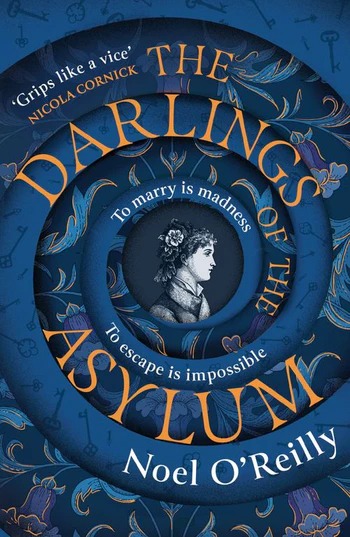

Artis-Ann , Features Writer
Hiding From Memory: Darlings Of The Asylum By Noel O’Reilly

The novel proper begins in Brighton society, 1886, where mothers seek husbands for their daughters; old families with breeding and few assets mingle with new faces and new money. Bridgerton meets Pride and Prejudice as the reader is led along paths of courtship, betrothal and betrayal. The game is on!
We quickly discover that Violet Pring, our heroine, lacks enthusiasm for the plans her mother has for her. She is determined that if she marries at all, it will be for love, ‘not just to gain an establishment’. She has known Felix forever and loves him – as a brother, not as the husband her mother intends.
Headstrong and sure of herself, she will not be railroaded into a marriage she is sure will never work, despite both her mother and, unusually for him, her father, being in favour of an alliance with Felix who is, it has to be said, wholly and sincerely in love with Violet – and happens to be from a particularly wealthy family. She longs to break free from convention and enjoy life on her own terms. Violet cannot accept Felix’s proposal but she has yet to learn, as a young woman of her time, just how powerless she is.
The narrative is not linear and the events leading to her incarceration are only slowly revealed but she wakes, several days later, in a room in Hillwood Grange, under the care of Dr Rastrick. It is the local lunatic asylum, often referred to by its inmates as Hellwood Grange, and she has been placed on the ward for the most serious cases. She has met Dr Rastrick several times; he has been employed previously to care for her mother and, on occasion, Violet herself. He may be thought by some to be a quack but he heads Hillwood Grange, and, in Violet’s eyes, has ‘a quality of pure evil’.
We can guess who is responsible for committing Violet to the narrow confines of Hillwood Grange, but it takes time to understand how it came about. Her ‘condition’ is explained and the latter part of the narrative considers how she might escape. She has been abandoned, it seems, by her family, but still has friends who can help and the pace of the last few chapters quickens as the reader flees with her, always fearful of being caught.
The ending is unexpected – I will not say more for fear of spoiling it for you, but it lends itself to a sequel. Whatever shall become of Violet Pring?